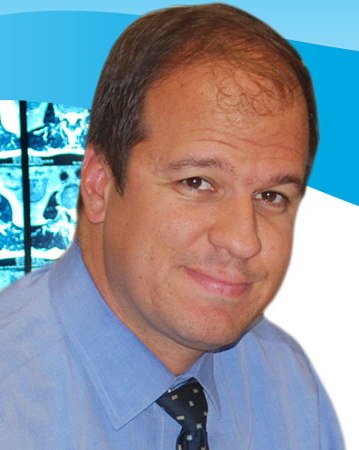 Endoscopic spine surgery has been around for many years, but the technique is just beginning to become more refined and more accessible to surgeons and patients in the United States. It's becoming more popular around the world as well.
Endoscopic spine surgery has been around for many years, but the technique is just beginning to become more refined and more accessible to surgeons and patients in the United States. It's becoming more popular around the world as well.
"Every few months for the past few years I've been going over to the Middle East and Europe to train the increasing volume of surgeons interested in the technology," says Thomas Roush, MD, of Roush Spine in Lake Worth, Fla. "With each successive visit I have noticed exponentially larger interest and participation from surgeons and ancillary providers of spine care. It is quite clear to me that there will be increasing transition to endoscopic applications of surgical procedures currently being done with open techniques. I see these endoscopic applications gaining more traction in the ambulatory surgery center setting, and surgeons in the United States are becoming more interested in learning and adopting the procedure."
Technology development
Early on, the endoscopic spine systems were somewhat unwieldy, Dr. Roush says, and surgeons had limited visualization. Surgeons could only do a few procedures with the endoscopic technology, and these procedures did not adhere to the tenets of open surgery. However, the next generation technology provides solutions to many of these issues.
"Now there are newer modular systems that allow the surgeon to use the endoscope and perform the same surgical steps that surgeons were trained to do in open procedures, but also meeting the vignettes to code for it properly," says Dr. Roush. "We as surgeons are able to adhere to the surgical criteria payers demand for these decompressive techniques."
In the United States, endoscopic spine surgery consists of decompression with discectomy and nerve root decompression. This is the same indication for open microdiscectomy, which is quite broad.
"Only in the past three years or so has the endoscopic technology been sufficient to do the surgery with the endoscope and yield the same results as open surgery," says Dr. Roush. "Now it's possible to visualize the nerve root, mobilize the nerve root and thecal sac, and decompress neurologic structures under direct visualization. This includes fragments of disc and other structures compressing the nerve roots, such as ligamentum flavum, endplate and facet osteophyte, and facet cysts. The endoscopic cameras are primarily high definition and the image illumination and resolution is in my opinion clinically equivalent to the microscope."
The endoscopic procedures require a 6 millimeter to 8 millimeter incision and produces less trauma to dissect down to the target area of the disc. The endoscope enters through the dilator system without disrupting the spine's critical stabilizing structures.
"We access the disc now extraforaminally, coming from the oblique plane. None of the stability-providing bone or tissue structures are removed," Dr. Roush says.
Payment issues
The key to this transition is endoscopic systems allowing surgeons to perform every technique in the requested and necessary order for the traditional spine surgery codes. "It's important that surgeons understand the codes and do what is necessary for the use of the discectomy code they select," says Dr. Roush. "Early on, none of the endoscopic systems allowed adherence to the existing coding requirements. This fact made it difficult to achieve reimbursement as a surgeon for these techniques."
Surgeons also express concern with the learning curve for new technology. Dr. Roush was able to use his training in traditional spine surgery to make a clean transition to the endoscopic extraforaminal approaches. The surgical steps were the same and he does the same work under "better visualization." He is also able to perform the surgery in an outpatient setting, which is critical for improving patient outcomes and reducing cost.
"We as surgeons need to adhere to the principles of open techniques that we know work for patients," he says. Dr. Roush sees these procedures becoming more popular in the United States and continuing to develop in the future.
Future growth
He conducted his first training for surgeons outside of the United States approximately three years ago. He served as the chairperson for the educational sessions and now has requests for training twice per month. There are 30 surgeons to 40 surgeons present at each training session, showing the technique's rapid growth internationally.
"The numbers internationally are exploding, and hospitals are purchasing the equipment," says Dr. Roush. "In the United States, surgeons are still a bit hesitant. They remember the difficulties with the early stages of the technology and they underwent disappointment with the 'inside-out' technique not being able to duplicate the necessary neurologic decompression. But I've noticed a significant volume increase over the past year as surgeons have become more comfortably with the more traditional and appropriate 'outside-in' technique with more surgeons requesting training and purchasing systems from major companies."
"Certainly the technology will evolve once interbody spacers and further discectomy options are released and approved worldwide," says Dr. Roush. "Out of all the discectomy surgeries performed in the United States, it's my experience that around 50 percent to 60 percent could be done with the endoscope instead of the purely open technique. That potential is staggering, given the high volume of microdiscectomies done in the United States."
Patients are also becoming more aware of endoscopic technology and requesting its use. Patient preference could push more surgeons to learn the technique as well. "Endoscopic spine surgery was entering a phase of dormancy just a few years ago, but that trend is reversing rapidly and will continue to build momentum into the future," Dr. Roush says.


